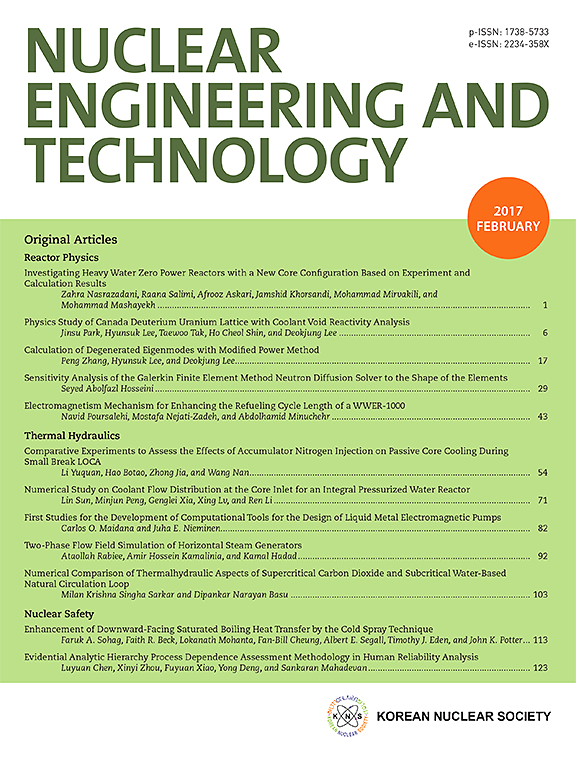火花等离子烧结法制备磷酸钙片的剂量学性能
IF 2.6
3区 工程技术
Q1 NUCLEAR SCIENCE & TECHNOLOGY
引用次数: 0
摘要
考虑到有一个合适的剂量计来测量10-1000 Gy范围内的剂量的重要性,研究了磷酸钙作为热释光剂量计的剂量学响应。除了研究粉末形状样品的剂量学响应外,还研究了在650°C和685°C、40 MPa条件下用火花等离子烧结方法压缩粉末后样品的片剂形态。结果表明,大多数样品在期望的剂量范围内表现出线性响应,对剂量变化有良好的响应。平均发光峰值温度为195 ~ 235℃。样品的弱点是它们的褪色效应;因此,大多数样品在30天内失效。结果表明,合成的β-TCP磷酸钙片剂在650℃和40 MPa压缩条件下的剂量反应最佳,但粉末和片剂的剂量反应比较表明,片剂的制备条件至关重要,将粉末转化为片剂并不一定能改善剂量测定结果。本文章由计算机程序翻译,如有差异,请以英文原文为准。
Dosimetric properties of calcium phosphate tablets prepared by spark plasma sintering method
Considering the importance of having a suitable dosimeter to measure the dose in the range of 10–1000 Gy, the dosimetry response of calcium phosphate, as a thermoluminescent dosimeter, was investigated. In addition to studying the dosimetric response of the samples in powder shapes, the tablet forms of the samples produced by compressing the powders with the spark plasma sintering method at 650 °C and 685 °C and 40 MPa were also examined. The findings indicate that most samples exhibit a linear response within the desired dose range and have a good response to dose changes. The average glow peak temperature ranged from 195 to 235 °C. The weakness of the samples was their fading effects; thus, most samples lost their effectiveness within 30 days.
While the results indicate that the synthesized β-TCP calcium phosphate tablets compressed at 650 °C and 40 MPa show the best dose response among the samples studied, a comparison between the dosimetric responses of powder and tablet forms reveals that the tablet preparation conditions are crucial, and converting powder into tablets does not necessarily yield improved dosimetric outcomes.
求助全文
通过发布文献求助,成功后即可免费获取论文全文。
去求助
来源期刊

Nuclear Engineering and Technology
工程技术-核科学技术
CiteScore
4.80
自引率
7.40%
发文量
431
审稿时长
3.5 months
期刊介绍:
Nuclear Engineering and Technology (NET), an international journal of the Korean Nuclear Society (KNS), publishes peer-reviewed papers on original research, ideas and developments in all areas of the field of nuclear science and technology. NET bimonthly publishes original articles, reviews, and technical notes. The journal is listed in the Science Citation Index Expanded (SCIE) of Thomson Reuters.
NET covers all fields for peaceful utilization of nuclear energy and radiation as follows:
1) Reactor Physics
2) Thermal Hydraulics
3) Nuclear Safety
4) Nuclear I&C
5) Nuclear Physics, Fusion, and Laser Technology
6) Nuclear Fuel Cycle and Radioactive Waste Management
7) Nuclear Fuel and Reactor Materials
8) Radiation Application
9) Radiation Protection
10) Nuclear Structural Analysis and Plant Management & Maintenance
11) Nuclear Policy, Economics, and Human Resource Development
 求助内容:
求助内容: 应助结果提醒方式:
应助结果提醒方式:


